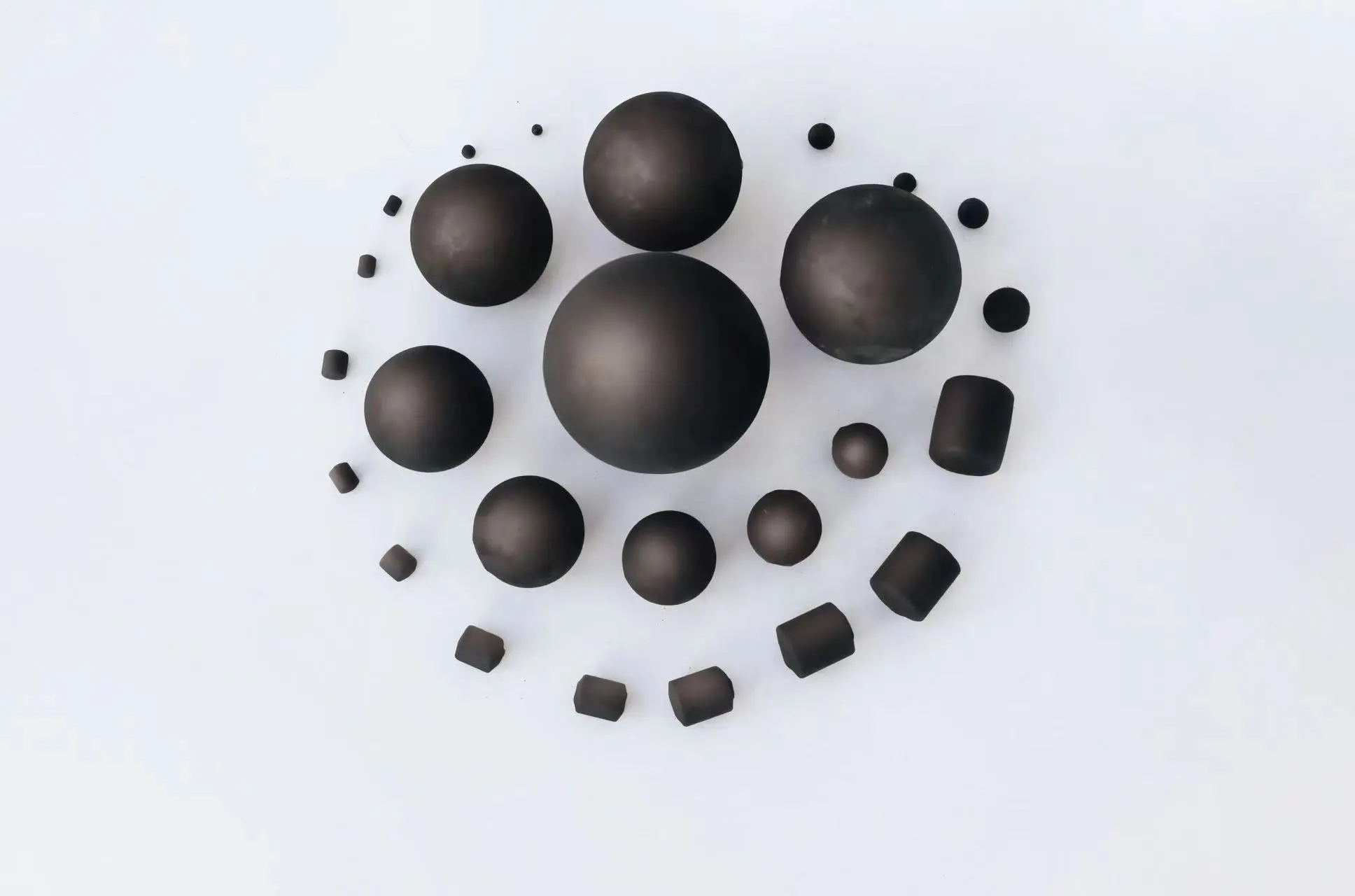Composition and Durability: The Core Differences
High chrome grinding media typically contains 10-30% chromium content, while low chrome media usually has less than 3% chromium. This fundamental difference in composition leads to several distinctive characteristics that are crucial for various industrial applications.
High chrome grinding media boasts superior hardness and wear resistance due to its elevated chromium content. The presence of chromium facilitates the formation of hard carbides within the metal matrix, significantly enhancing the material's ability to withstand abrasive forces. This results in a longer lifespan for high chrome grinding media, meaning it can endure prolonged use in harsh environments without significant degradation. Consequently, this durability leads to reduced media consumption over time, making high chrome options a cost-effective choice for industries that rely on consistent performance.
In contrast, low chrome grinding media, while still durable, tends to wear faster in highly abrasive environments. Although it is often considered a reliable option, its lower chromium content makes it less effective at resisting wear compared to its high chrome counterpart. However, low chrome media typically comes at a lower initial cost, which can make it an attractive option for certain applications where extreme durability isn't a primary concern. For example, in operations where the material being processed is less abrasive, low chrome media can offer sufficient performance without the need for more expensive materials.
The durability factor directly impacts the frequency of media replacement and overall operational costs. High chrome media, with its extended lifespan, can significantly reduce downtime associated with media changes, allowing for more continuous operation. Additionally, this longevity lowers long-term expenses despite a higher upfront cost, making high chrome grinding media a wise investment for many industries focused on efficiency and productivity. Ultimately, the choice between high and low chrome grinding media should be guided by the specific needs and conditions of the application, balancing initial costs against potential long-term savings.
Performance and Efficiency in Various Applications
The performance of grinding media is closely tied to the specific requirements of different industries and processes. High chrome grinding media excels in applications that demand high impact resistance and superior wear characteristics.
In cement production, for instance, high chrome grinding media proves invaluable due to its ability to maintain its shape and size for extended periods. This consistency ensures a stable grinding performance over time, contributing to uniform particle size distribution in the final product.
The mining industry, particularly in the grinding of hard ores, often favors high chrome media. Its robust nature allows it to withstand the intense forces involved in breaking down tough minerals, maintaining grinding efficiency even under challenging conditions.
Low chrome grinding media, while less durable, finds its niche in applications where the material being ground is less abrasive. It can be an economical choice for processing softer materials or in situations where frequent media replacement is less problematic.
The energy efficiency of the grinding process is another factor to consider. High chrome media, due to its hardness, can sometimes require more energy to achieve the same level of grinding. However, this is often offset by its longer lifespan and consistent performance, which can lead to overall energy savings in the long run.
Environmental and Economic Considerations
The environmental impact of grinding media is an increasingly important consideration in today's eco-conscious industrial landscape. High chrome grinding media, with its longer lifespan, contributes to reduced waste generation over time. Fewer replacements mean less frequent disposal of spent media, aligning with sustainability goals.
However, the production of high chrome media typically requires more energy and resources due to its higher chromium content. This initial environmental cost needs to be weighed against the long-term benefits of reduced waste and improved efficiency.
Low chrome media, while requiring more frequent replacement, may have a lower environmental impact in its production phase. The choice between the two often involves a careful balancing act between immediate and long-term environmental considerations.
From an economic perspective, the decision between high and low chrome media involves a nuanced cost-benefit analysis. The higher initial investment in high chrome media needs to be evaluated against the potential savings in replacement costs, downtime reduction, and improved grinding efficiency.
Factors such as the scale of operation, the abrasiveness of the material being ground, and the frequency of maintenance shutdowns all play a role in determining the most economically viable option. In some cases, a mixed media approach, using both high and low chrome balls in different stages of the grinding process, can provide an optimal balance of performance and cost-effectiveness.
The choice between high chrome grinding media and low chrome grinding media is not a one-size-fits-all decision. It requires a thorough understanding of the specific grinding application, material characteristics, operational constraints, and long-term economic and environmental goals. By carefully considering these factors, industries can make informed decisions that optimize their grinding processes, enhance efficiency, and contribute to sustainable operations.
For those seeking expert guidance on selecting the right grinding media for their specific needs, NINGHU offers a range of high-quality casting grinding balls and cylpebs in various sizes and chromium contents. With over three decades of experience in wear-resistant materials production, NINGHU provides solutions tailored to diverse industries including cement and building materials, metallurgical mining, thermal power generation, and magnetic materials. To learn more about their products and receive personalized recommendations, interested parties can reach out to sales@da-yang.com and sunny@da-yang.com.









